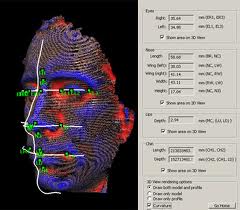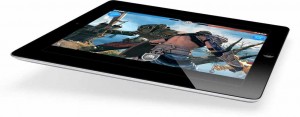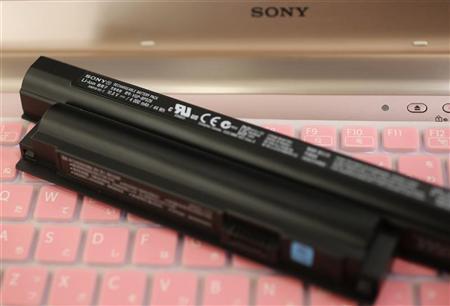The mobile phone, also known as cellular phone, has become one of the most successful inventions in the 20th century. In the late 90s, mobile phones became one of the major communication devices. The first commercial mobile phone system started in 1979 in Japan. According to Cellular Online, the global mobile phone subscribers in 2003 are around 1.52 billion, which is about 20 percent of the current world population. This figure showed the success of the mobile phone industries. In about 20 years’ time, this technology conquered the global and became a demand for the majority of people in the world. It provided communication for people no matter anywhere and anytime.
Wireless services started with a blueprint that relied on cellular technology. Cellular’s name connotes that each geographic region of coverage is broken up into cells. Within each of these cells is both a radio transmitter as well as control equipment. The first cellular services, which operate at 800 MHz, used analog signals. Analog sends signals using a continuous stream or wave. When a cellular phone customer turns on his phone, a signal is sent that identifies him as a customer, makes sure he is a paying customer, then searches out a free channel to fit his call.
A Brief History of the Mobile Phone
A Brief History of the Mobile Phone
PCS, or personal communications services which operates at 1900 MHz, on the other hand, followed years later. New entrants into the wireless market chose digital technology instead of analog. These companies saw the promise in building out PCS (personal communications services) systems based on digital, and hope to benefit from continued growth.
Unlike analog which sends signals using a continuous stream, digital technology works by sampling pieces of the wave, chopping it up and then sending it in bursts of data. Digital technology basically encodes the voice into bit streams. It is this delivery that makes digital more suitable to carry data, say fans of the technology, not to mention more secure. Other benefits of digital include better usage of “bandwidth,” or the power of the frequency, and a less chance of a corrupted call.
One of digital’s drawbacks, however is its host of different technologies. There are three digital wireless technologies: CDMA (code-division multiple access), TDMA (time-division multiple access), and GSM (global system for mobile communication), so phones that work with one technology may not necessarily work on another network that supports another technology.
Drawbacks aside, digital is shaping up to be the technology of the future. If customers switch in their landline phones for one phone–their wireless phone–it will most likely be based on digital technology. This phenomenon, called wireless local loop–or using wireless as one would use a fixed phone–is especially taking off internationally where telephone infrastructure is scarce and very expensive to install. Wireless phones are the quick and easy way for a wireless operator to get phones and phone services out to customers. And with the tidal wave of new data applications being designed and implemented for digital networks, digital looks like the next-generation technology title winner.
Mobile phones were meant to be a device which enables users to have the ease on telecommunication freely wherever they want. But in the late 90s, SMS (Short Message Service), a new technology was brought out. SMS is a transmission of short text message from mobile phones to mobile phones. This became a revolution making mobile phones to develop into a device that not only allows simple voice to voice telecommunication. Mobile phone now not only became an entertainment device (featuring functions such as camera, FM and MP3 players etc) but also allowing users to access through internet, personal digital assistant (PDA) functions and also having video conference using the latest 3G network. Someday, mobile phones might be able to replace computers.
From the early stages of analog cellular to now the latest 3G mobile phone system, the mobile phone developed rapidly in the past 20 years. Each stage of development provided a big improve to the industries. From early stages of voice to voice simple communication, to the WAP and GPRS internet connection and now the high speed internet connection through the internet, it showed that mobile phones is one of the leading technology in the high technology industry. The convenience brought by this technology indeed changed the life of many people and society. Many things such as banking, gathering information such as reports or latest news, control the share market via GPRS etc are what the technology helped to improve and ease the life of people. Japan is the country which the mobile phone technology develops the fastest in the world. Before the 3G technology was launched in other countries, the Japanese had already mastered the technology. A discussion about the fast development of mobile phone industry Japan will be included in the essay.
Studies believed that a new mobile phone network system, 4G will be in the market in the nearby future. 4G, or known as the fourth generation mobile is a whole new radio access network. Stronger and clearer signals and higher speed (broadband speed, 100 times faster than the 3G connection) connection through the internet are the highlights of the 4G technology. Although the 3G technology had only been promoted no long ago, this new technology is now under development stage and believed to be put out in the market in year 2010. It is believed that the 4G will be a big leap and a whole new revolution for the mobile phone industry and the users.
Along with the development of mobile phones, many subsidiary technology developed by the mobile phone companies were also developed and influencing other products such as Bluetooth, Symbian (an operating system (OS) specially designed for mobile phones) and some software companies that designs software for the Symbian OS. These technologies improved the interactive among mobile phones and the users. It provided a much convenience and wider usage for the mobile phone users. More and more companies now are trying to gain a share in the mobile phone market. Many big companies which are developing PDA OS such as Window CE (Pocket PC), PALM and Linux are also engaging their OS with mobile phones functions. This proved that the mobile phone industry is indeed a good market to invest in. The competition in the market is also another reason causing the mobile phone industry to develop in such a short time.
Source : Phoneshop UK & The WirelessAdvisor.com Team
Edited By TecHead, e-News® Exclusive





































